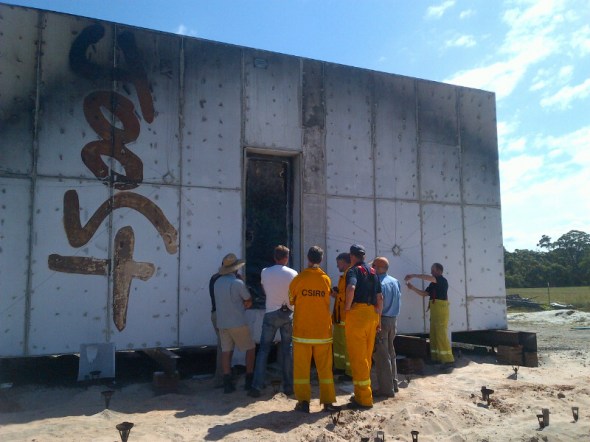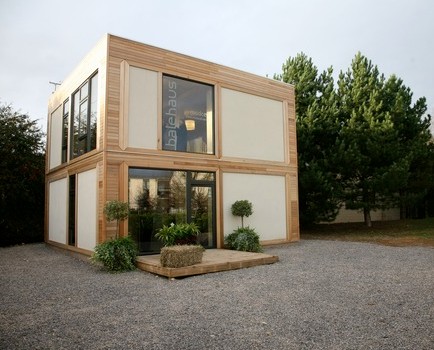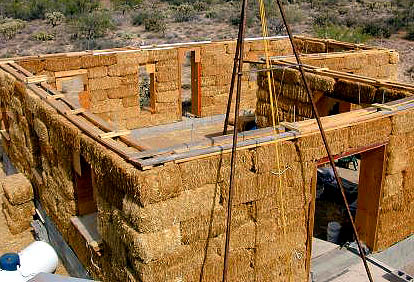What’s fire-proof, wind-proof, earthquake-proof and possibly the building material of the future?
What comes to mind when you think of home building materials of the future in the 21st century? Most of us would likely think of the latest breakthroughs in science like (Graphene Spiral-Helix Nano Architecture), but this is not the case. Turns out that the latest and greatest is none other than yes, you guessed it… HAY! The very same hay that some of us grew up watching Mr. Ed eat has found its way back into our homes as a new super material that so far seems to be impervious to anything that nature can throw at it.
Using hay to build homes has been around for centuries in many parts of the world. Usually combined with earth, clay or sand and compressed into bricks small enough to stack are commonly known as Adobes. While these building techniques and materials have been around for ages the home building industry has taken a fresh look at them pairing them up with the latest advances in building construction with very promising results:
FIRE-PROOFING:
Earlier this year scientist from CSIRO tested a structure that used straw as an internal insulation covered in Modak boarding which is a modern building board technology that is completely fire-resistant. With dozens of censors in place the structure was subjected to external temperatures exceeding 1800 degrees Fahrenheit while internal temps only reached a cool 95 degrees Fahrenheit, now that’s impressive. Many lives and millions of dollars could have been saved if all of the homes lost in the recent wildfires that hit California, Texas, Arizona, New Mexico, Colorado, Georgia and Florida were built using this method.
WIND-PROOFING:
Ride out a hurricane in style in this sleek modern straw design for ($230,000 US). Part of a study by the University of Bath’s Centre for Innovative Construction Materials in Leeds, England produced this stunning structure made from pre-fab wood panels filled with formed straw bales. With walls about a foot and a half thick the home was blasted with 120 mph winds and only moved one sixth of an inch. In addition to hurricane proofing the thick walls reduced heating and cooling cost a whopping 80%, not bad for a two-story 4 bedroom home under $300,000!
QUAKE-PROOFING:
Following the devastating 7.3 quake in Pakistan which left millions without shelter, the country turned to straw-bale construction to fill the immediate need for housing. The typical straw bale structure can be framed and raised in about one day with a very modest crew because the construction techniques are so simple. After pouring a solid concrete sub-structure to prevent water seepage the bales of hay are simply stacked atop one another between load bearing posts that support the roof to form the walls. Each bale is then tied together using a type of rebar pin after wiring and plumbing are routed. A final weatherproof layer of plaster or stucco is applied to the exterior for finishing. The comparative costs to build a straw house is roughly $5-6 per square foot vs $12 per square foot for conventional developers making this an extremely cost effective rebuilding method for the country.
SUSTAINABILITY:
With the quality of lumber in sharp decline home builders are taking a hard look at straw for its cheap and long-term sustainability. In North America alone about 140 million tons of straw are produced annually from agriculture of wheat, rice, barley and oats after harvesting. In most cases this byproduct is considered waste and consequentially burned in fields adding to air pollution and global warming.
The abundance of straw and its low-cost renewability coupled with other modern construction materials make this a prime candidate for the future of home construction. There simply hasn’t been any other building material that can withstand the forces of nature while maintaining a low construction cost at the same time.
Besides the initial 50% reduction in construction costs, think about the long-term savings that can be achieved when you eliminate hurricane, fire, and earthquake insurance along with the overall reduction in electricity bills. This type of home would pay for itself in no-time. Slap on some solar panels and it would probably generate money by selling un-used electricity back to the grid.
All in all, the safety vs costs aspect of this method of construction will be most prominent in everyone’s mind.
Contributor, designer & admin for JohnHart Gazette.





